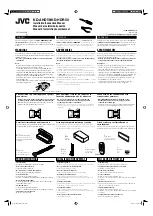
SLOU186F
–
AUGUST 2006
–
REVISED AUGUST 2010
5.2
Receiver
–
Analog Section
The TRF7960/61 has two receiver inputs, RX_IN1 (pin 8) and RX_IN2 (pin 9). The two inputs are
connected to an external filter to ensure that AM modulation from the tag is available on at least one of the
two inputs. The external filter provides a 45
°
phase shift for the RX_IN2 input to allow further processing of
a received PM-modulated signal (if it appears) from the tag. This architecture eliminates any possible
communication holes that may occur from the tag to the reader.
The two RX inputs are multiplexed to two receiver channels: the main receiver and the auxiliary receiver.
Receiver input multiplexing is controlled by control bit B3 (pm-on) in the chip status control register
(address 00). The main receiver is composed of an RF-detection stage, gain, filtering with AGC, and a
digitizing stage whose output is connected to the digital processing block. The main receiver also has an
RSSI measuring stage, which measures the strength of the demodulated signal.
The primary function of the auxiliary receiver is to measure the RSSI of the modulation signal. It also has
similar RF-detection, gain, filtering with AGC, and RSSI blocks.
The default setting is RX_IN1 connected to the main receiver and RX_IN2 connected to the auxiliary
receiver (bit pm_on = 0). When a response from the tag is detected by the RSSI, values on both inputs
are measured and stored in the RSSI level register (address 0F). The control system reads the RSSI
values and switches to the stronger receiver input (RX_IN1 or RX_IN2 by setting pm_on = 1).
The receiver input stage is an RF level detector. The RF amplitude level on RX_IN1 and RX_IN2 inputs
should be approximately 3 V
PP
for a V
IN
supply level greater than 3.3 V. If the V
IN
level is lower, the RF
input peak-to-peak voltage level should not exceed the V
IN
level. Note: V
IN
is the main supply voltage to
the device at pin 2.
The first gain and filtering stage following the RF-envelope detector has a nominal gain of 15 dB with an
adjustable bandpass filter. The bandpass filter has adjustable 3-dB frequency steps (100 kHz to 400 kHz
for high pass and 600 kHz to 1500 kHz for low pass). Following the bandpass filter is another
gain-and-filtering stage with a nominal gain of 8 dB and with frequency characteristics identical to the first
stage.
The internal filters are configured automatically, with internal presets for each new selection of a
communication standard in the ISO control register (address 01). If required, additional fine tuning can be
accomplished by writing directly to the RX special setting registers (address 0A).
The second receiver gain stage and digitizer stage are included in the AGC loop. The AGC loop is
activated by setting the bit B2 = 1 (agc-on) in the chip status control register (address 00). When
activated, the AGC continuously monitors the input signal level. If the signal level is significantly higher
than an internal threshold level, gain reduction is activated. AGC activation is by default five times the
internal threshold level. It can be reduced to three times the internal level by setting bit B1 = 1 (agcr) in the
RX special setting register (address 0A). The AGC action is fast, typically finishing after four sub-carrier
pulses. By default, the AGC action is blocked after the first few pulses of the sub-carrier signal. This
prevents the AGC from interfering with the reception of the remaining data packet. In certain situations,
this type of blocking is not optimal, so it can be removed by setting B0 = 1 (no_lim) in the RX special
setting register (address 0A).
The bits of the RX special settings register (address 0A), which control the receiver analog section, are
shown in
5.2.1
Received Signal Strength Indicator (RSSI)
The RSSI measurement block measures the demodulated signal (except in the case of a direct command
for RF-amplitude measurement described in the
section). The measuring system
latches the peak value, so the RSSI level can be read after the end of the receive packet. The RSSI
register values reset with every transmission by the reader. This allows an updated RSSI measurement
for each new tag response.
Copyright
©
2006
–
2010, Texas Instruments Incorporated
System Description
17
focus.ti.com:
















































